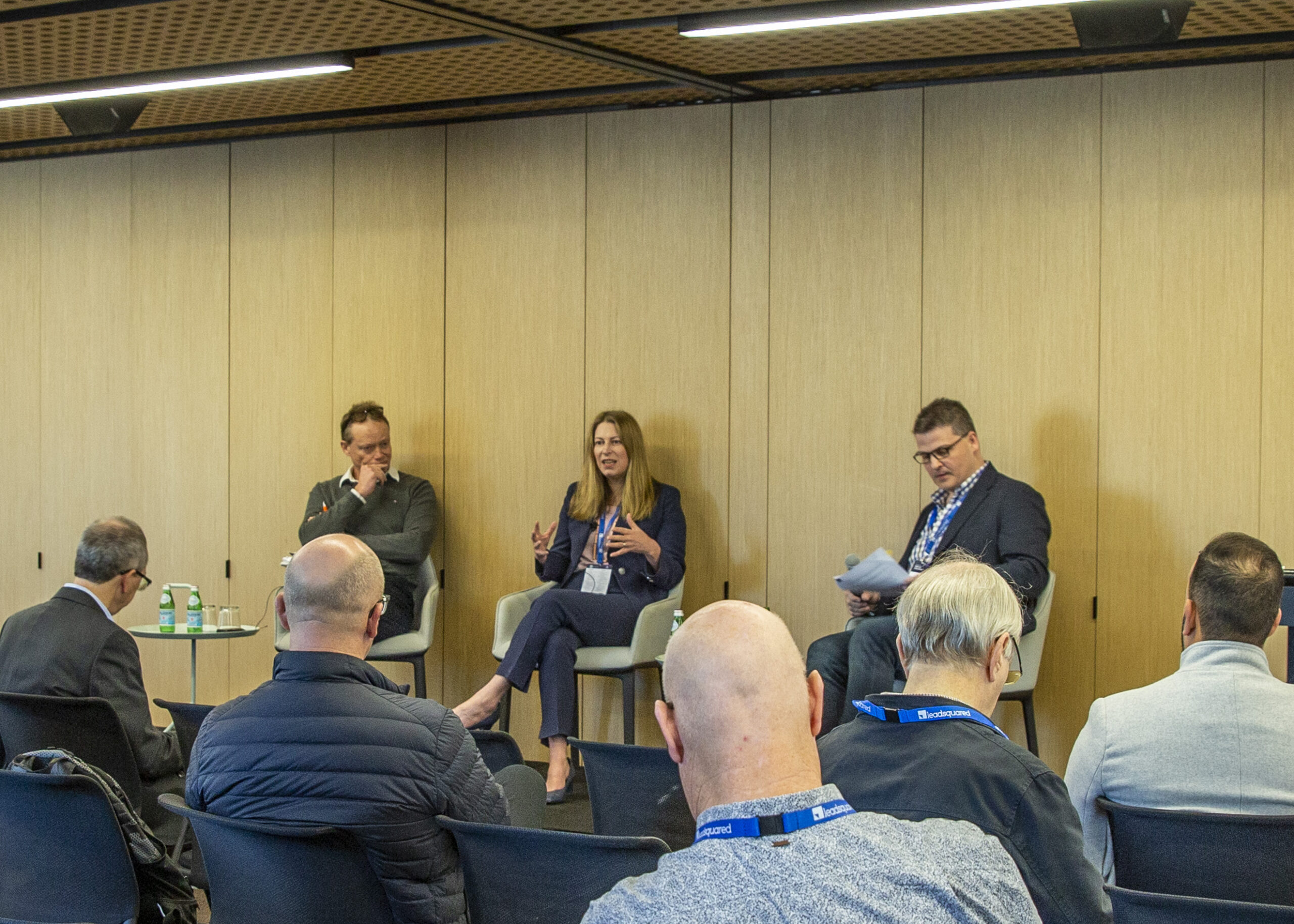This session was part of the Melbourne EdTech Week 2022. The keynote conversation titled “Delivering Future Skills” was recorded on Tuesday 9 August 2022 at Deakin Downtown in Melbourne, Australia. Kate Pounder, Patrick Kidd, and David Linke were in discussion.
There is a demand for talent in technology-focused careers. These jobs are higher paying, and higher growth. At the moment, however, we do not have enough learners engaging and graduating with these kinds of degrees.
Government, public institutions, and private providers all play a role in making the next cohort of learners excited about the possibilities of technology. In order to meet the 1.2 million anticipated positions in 2030, hundreds of thousands of people will need to be trained, reskilled or upskilled.
What does best practice training look like? Should there be a national strategy?
Education innovation thought leaders Kate Pounder, Patrick Kidd, and David Linke looked at the numbers, training models, and the role of private suppliers in the future.
Technology jobs in Australia
Where there is need for technology workers
Encouraging women into the sector
Training models
The role of private providers
Best practice training pathways
Think Big, Drive Change, Transform Learning
Technology jobs in Australia
When Tech Council of Australia launched, they realised that people found it difficult to visualise the number of jobs there actually were in technology, says Kate Pounder. They set out to calculate just how many workers were in technology-intensive jobs.
860,000 digital technology workers.
That is an incredible amount of people in this space. But the Tech Council of Australia also understands that there will be a supply issue of talent if institutions do not continue to matriculate these kinds of graduates. They will need 1 million tech workers by 2025 and 1.2 million in 2030 to meet demand.
Although there has been an increase in ICT degrees since 2018, the completion rate is flat. However, there is a huge growth in jobs in the technology space.
Across public and private systems, there needs to be the capacity to upskill people to successfully enter these careers.
Where there is need for technology workers
It is important to dissect the numbers from the Tech Council of Australia, says Patrick Kidd. 60,000 people will need to be trained a year to meet this demand in technology intensive positions.
In the national training system, about 10,000 people graduate a year with these skills. But not all 10,000 will go into jobs that are technology focused. This leaves a considerable gap in talent.
What do we need to do strategically? It is something that the nation needs to address. Australia needs to consider how to deliver training at scale.
Encouraging women into the sector
According to research through the Tech Council of Australia, women are more likely to enter the sector between the ages of 25 and 30 through reskilling or an early-career change. Conversely, men are more likely to enter the sector directly from a degree.
If we want to see more women represented in the sector, the role of the training system (from school to tertiary education) needs to be considered.
Enable people early to get the technology skills they need in order to be interested in this career marketplace, says Patrick Kidd. The education system needs to normalise the technology careers that are out there, but also articulate the variety of careers available.
It is not only about STEM. There are project managers, leadership positions, and the need for professionals to enter the sector with high-level people skills.
It is about inspiring learners. How do we talk less about technology itself and more about what technology enables?
Training Models
There are a number of quality training models that are out there, but each one needs to be judged by their use and merit. Whether to democratise training is an interesting question when considering different models. With free delivery courses, it has not been obvious in the research that people will use them.
The mentorship model, however, is promising.
Institutions should find another way of surfacing what employers need in order to make the training more relevant, and also expand the training we have available.
There are many employer-developed training programs and other models that are successful, but it can be hard to navigate the options as a worker, says Kate Pounder. There needs to be more standardisation in the types of training available.
Additionally, a bootcamp and work-based 12-month training program could be really transformative as they are supported by the business themselves to cultivate the kind of talent that they want. This is an apprenticeship model for the technology sector.
The role of private providers
If Australia needs to place 650,000 people into these jobs by 2030, Kate Pounder estimates that many of those people will be upskilling and reskilling from other careers.
We do know, however, that there are Australians that find it difficult to afford the private offerings. Improving the capability of the VET sector then becomes vital. Otherwise, a whole generation of people will be excluded from these higher paying, high growth jobs.
Best practice training pathways
While the larger organisations have the resources to facilitate these employer-designed training pathways, it is much harder for small and medium sized businesses. There is a real opportunity to give easy-to-access packages for these organisations, says Patrick Kidd.
Workplace integrated learning can help people make more successful transitions into their role.
There needs to be an agile system in place that recognises people learn in different ways. The challenge is: how do we help the training system work with employers in the best way?
Think Big, Drive Change, Transform Learning
In response to this Melbourne EdTech Summit theme, Patrick Kidd and Kate Pounder were asked what could meaningfully transform the delivery of future skills.
Kate Pounder says her wish is that in the next three years Australia would have a really exciting, world-leading apprenticeship scheme. It could create real pathways to these technology-intensive careers.
Patrick Kidd shares that the nation should come together and recognise this as a strategic challenge and opportunity. It would be great to create a clear line of what the priorities are and go after it.
Speakers

Kate Pounder
Kate Pounder is the CEO of the Tech Council of Australia driving the narrative of the need for technology focussed workers to drive Australia’s economic agenda. During an impactful 12 months, Kate and her team have set a grand vision to shape Australia’s digital future.

Patrick Kidd
Patrick Kidd is the CEO of the Digital Skills Organisation simplifying the digital skills sector by ensuring that training meets the needs of employers. Connecting employers, trainers and employees DSO delivers a range of programs to reimagine digital training programs leading to increased employment.

David Linke
David leads EduGrowth to advocate for the Australian EdTech ecosystem. As a passionate EdTech executive, David seeks to drive the impact of Australia’s EdTech ecosystem here and around the world.


